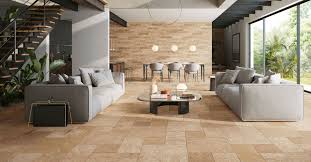Creating modern, sleek interiors often comes down to achieving clean lines and a polished finish. One of the most effective materials for this purpose is Medium-Density Fibreboard, or mdf wood. Known for its smooth surface, uniform composition, and ease of handling, MDF is widely used in cabinetry and wall panelling where precision and style are essential.
Why MDF is Ideal for Clean Lines
MDF is an engineered wood product made by compressing wood fibres with resin under high heat and pressure. This process creates a dense, smooth material with no visible grain, knots, or warping. The result is a perfectly uniform surface, ideal for cutting, shaping, and finishing.
For modern cabinetry and panelling, these qualities are invaluable. MDF allows for sharp, straight cuts and consistent edge profiles, which help achieve the crisp lines that define contemporary design. Unlike natural wood, MDF does not have variations in texture or density, meaning every panel or cabinet component looks and feels exactly the same.
Perfect for Precision Craftsmanship
Cabinetmakers and interior designers favour MDF because it can be cut and routed with precision. Whether you’re building flat-front cabinet doors, custom shelving, or wall panels with geometric detail, MDF maintains accuracy from one piece to the next. Its clean-cut edges do not splinter, making it especially suited for intricate designs and detailed joinery.
This precision also contributes to a seamless look. Cabinet doors align perfectly, panels fit tightly together, and trim can be installed without noticeable gaps. These characteristics help create that high-end, minimalist aesthetic popular in today’s kitchens, bathrooms, and living spaces.
Smooth Surface for Flawless Finishes
One of the main advantages of MDF wood is its smooth, even surface, which takes paint exceptionally well. Without the natural grain found in timber, MDF allows for a consistent application of paint or primer, resulting in a flawless finish. This is especially important in cabinets and panelling where the surface is on full display.
Painted MDF cabinets look sleek and modern, and they can be easily colour-matched to suit any design scheme. Likewise, wall panels made from MDF can be painted in bold colours, muted neutrals, or classic whites to match the desired interior mood. MDF can also be veneered or laminated for a wood-look finish that mimics more expensive materials.
Consistency Across Projects
Consistency is critical when building cabinetry and wall panelling. Because MDF is manufactured, it offers a level of uniformity that natural wood cannot always provide. There are no knots, holes, or unpredictable grain patterns to work around, which means fewer adjustments during installation and a more streamlined workflow.
This consistency helps reduce waste and saves time during cutting and assembly. In custom cabinetry, where every measurement matters, having a material that performs predictably from sheet to sheet is a major advantage.
Conclusion
MDF wood is a top choice for achieving clean lines and smooth finishes in cabinets and wall panelling. Its uniformity, precision, and adaptability make it ideal for both modern and traditional interiors. Whether you’re working on a kitchen remodel, custom storage unit, or decorative wall treatment, MDF offers the reliability and quality needed to bring clean, sophisticated design to life.










